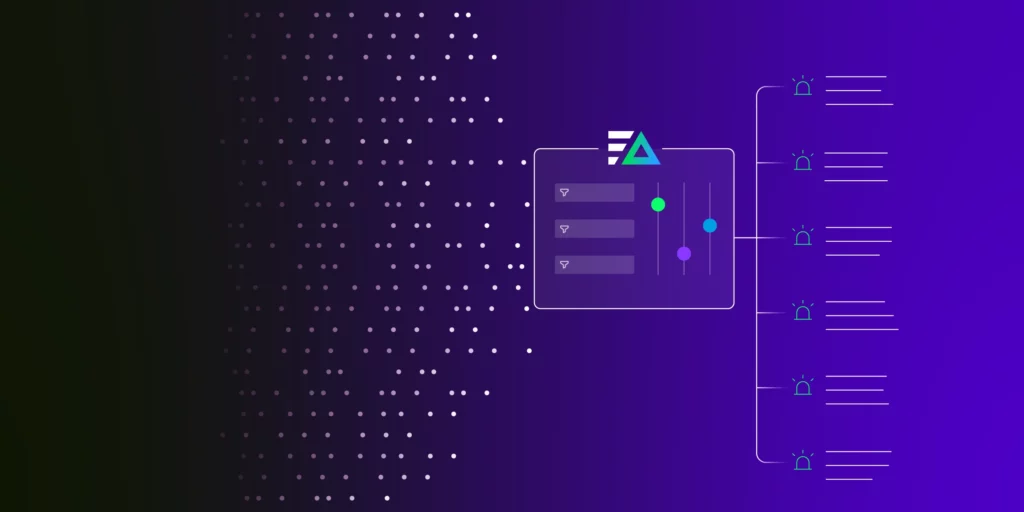Alerts help you stay a step ahead of issues within your applications and infrastructure, but they can also work against you. Too many alerts quickly lead to alert fatigue, which can result in critical alerts getting drowned out by the sheer volume of alerts your teams are receiving.
To help reduce alert fatigue and further strengthen your alerting infrastructure, Edge Delta offers composite monitors — a new monitoring feature living within Edge Delta’s backend platform that lets you combine multiple, existing monitors into a single, unified alerting system for your data. The result? Smarter alerts that give you more control over when and how you’re notified about issues.
Composite alerts are especially powerful when combined with Edge Delta’s Telemetry Pipelines, which take a modern architectural approach to data collection, processing, and routing. By shifting intelligence left into lightweight agents deployed closer to your data sources, Edge Delta Telemetry Pipelines process data more efficiently to fuel real-time alerting capabilities with composite monitors, helping teams lower both MTTD and MTTR.
In this post, we’ll give an overview of how composite monitors work and what you can gain by enabling them in Edge Delta.
What Are Composite Monitors?
Composite monitors are “meta-monitors,” which allow you to create new alerts based on the state of multiple existing monitors. Whether you’re monitoring metrics, logs, patterns, traces, or any combination of them, composite monitors give you the flexibility to define how your alerts should interact with each other before you’re notified.
For example, you can combine a log monitor with a pattern anomaly monitor and set up an alert to trigger only when both are in an alert state, as sometimes one alert is not enough to warrant immediate action but when both occur simultaneously, it’s a bigger concern.
How Do Composite Monitors Work?
Creating and configuring composite monitors is straightforward, and the benefits are immense. Here’s how you can leverage this feature within Edge Delta:
1. Combine Monitors: Take multiple monitors (e.g., metric thresholds, log monitors, and pattern anomaly monitors) and combine them into a single composite monitor. This allows you to monitor more complex conditions across your infrastructure without having to manage separate alerts for each individual monitor.
2. Define Conditions Across Groups: Each monitor in the composite can return results for different groups. For example, a composite monitor may contain a log monitor and a metric monitor that both include a group by on the {service.name} attribute, creating two and four groups respectively. The composite monitor will automatically trigger the alert with respect to the logic you defined — for instance, four groups if you select {A||B} and two groups if you select {A&&B}.

3. Alerting Logic: You can also configure composite monitors to trigger alerts only when specific conditions are met. For instance, if one monitor is in an alert state but the other is not, the composite monitor might not trigger an alert. However, if both are in alert conditions, the composite monitor will trigger a high-priority alert. You can build up these conditions as logical statements such as “A&&B” or “A||(B&&C)”, where each letter represents the alert state of a particular monitor. Note that you can add up to five constituent monitors to a composite monitor.
4. Receive Notifications: When an alert is triggered, you’ll be notified with detailed information, including which monitor triggered the alert, what the conditions were, and which specific groups were affected. This level of context makes troubleshooting much faster and easier.

Why is This Useful?
Composite monitors are especially valuable for use cases where you need to combine different types of monitoring conditions and prioritize alerts based on complex scenarios. Imagine you’re monitoring logs for certain items. At the same time, you’re also using pattern anomaly detection to identify outliers in the log data. With composite monitors, you can create an alert flow such that a higher-ranking alert is triggered only when both the log monitor and pattern anomaly monitor are in an alert state. This way, a single alert won’t overwhelm you, but when both monitors are activated, you’ll get an immediate, prioritized notification.
Conclusion
Intelligently aggregating individual monitors into a composite monitor greatly simplifies and enhances the way you monitor your systems. Edge Delta’s approach to observability through our Telemetry Pipelines is uniquely powerful, as it allows you to pair upstream data control and flexibility with a streamlined, effective monitoring solution to identify and remediate issues in real time.
With composite monitors, you can create smarter, more nuanced alerts, monitor complex conditions with ease, and ensure you’re always notified about the issues that matter most.
Want to learn more about Edge Delta’s composite monitors, Telemetry Pipelines, or backend platform? Book a demo with an expert or check out our free playground.






